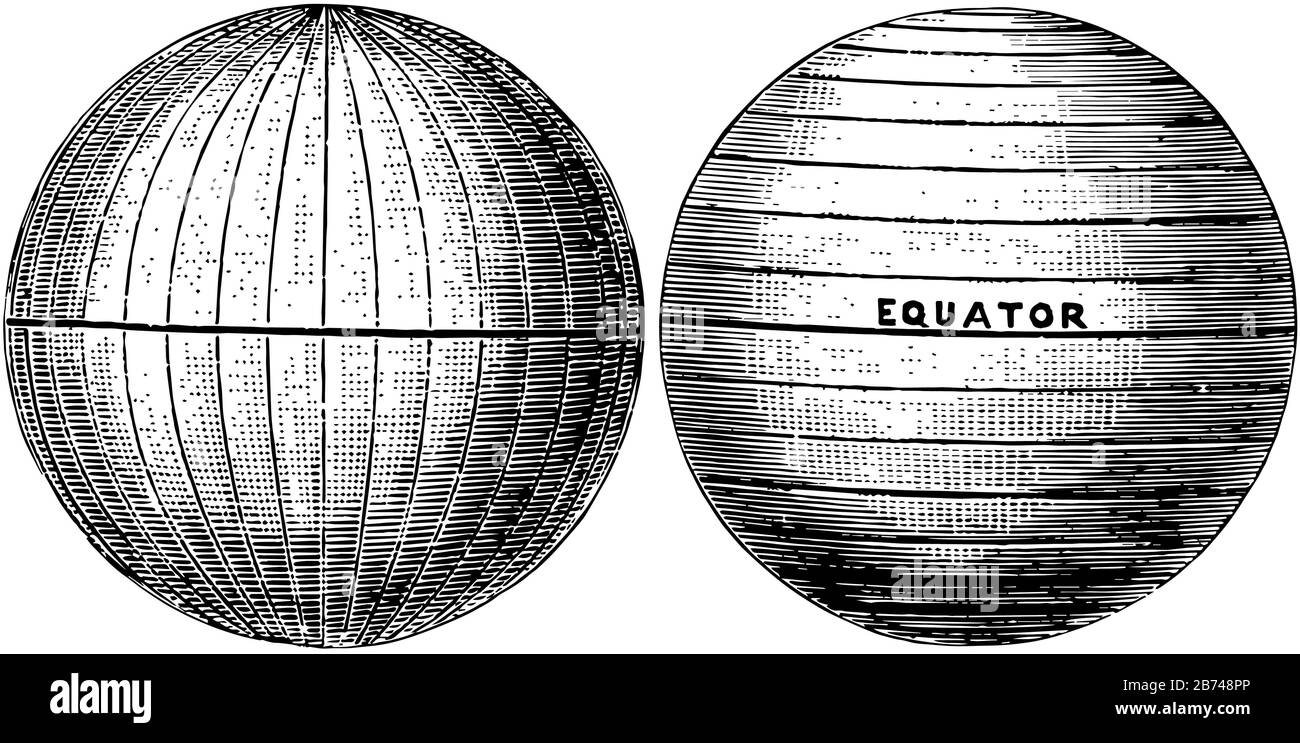
 In addition to the equator, there are two other fundamental parallels: the Tropic of Cancer and the Tropic of Capricorn. The equator is the parallel on which the sun's rays fall perpendicular to the earth's surface at the equinoxes. Starting from the equator and moving towards the Arctic Circle and the Antarctic Circle, each parallel is gradually shorter in length. The equator is approximately 40,075 km long. This plane divides the Earth into two hemispheres: the northern hemisphere and the southern hemisphere.Īll other parallels are imaginary circles parallel to the equator. The equator is the fundamental parallel that divides the Earth, forming a plane perpendicular to the Earth's axis. That is, they are obtained from the intersection between the earth's surface and the planes perpendicular to the earth's axis of rotation. Parallels are lines that form imaginary circles perpendicular to the earth's axis. Continuing east or west of this meridian, a longitude value of 0 ° to 180 ° is assigned followed by the indication E if we are in the east, OR if we are going from east to west of Greenwich. The longitude of the Greenwich meridian is 0 °. Only one meridian passes through each point on the earth's surface, which defines the longitude of the place, which is the angular distance between the Greenwich meridian and the meridian that passes through that point. The antimeridian of the Greenwich meridian crosses the Pacific Ocean and identifies the date line. The fundamental meridian is the Greenwich meridian and divides the Earth between the eastern and western hemispheres. Each meridian and the corresponding antimeridian have a length of approximately 20004.5 km. At all points on the earth's surface that are on the same meridian, it is noon at the same time.
In addition to the equator, there are two other fundamental parallels: the Tropic of Cancer and the Tropic of Capricorn. The equator is the parallel on which the sun's rays fall perpendicular to the earth's surface at the equinoxes. Starting from the equator and moving towards the Arctic Circle and the Antarctic Circle, each parallel is gradually shorter in length. The equator is approximately 40,075 km long. This plane divides the Earth into two hemispheres: the northern hemisphere and the southern hemisphere.Īll other parallels are imaginary circles parallel to the equator. The equator is the fundamental parallel that divides the Earth, forming a plane perpendicular to the Earth's axis. That is, they are obtained from the intersection between the earth's surface and the planes perpendicular to the earth's axis of rotation. Parallels are lines that form imaginary circles perpendicular to the earth's axis. Continuing east or west of this meridian, a longitude value of 0 ° to 180 ° is assigned followed by the indication E if we are in the east, OR if we are going from east to west of Greenwich. The longitude of the Greenwich meridian is 0 °. Only one meridian passes through each point on the earth's surface, which defines the longitude of the place, which is the angular distance between the Greenwich meridian and the meridian that passes through that point. The antimeridian of the Greenwich meridian crosses the Pacific Ocean and identifies the date line. The fundamental meridian is the Greenwich meridian and divides the Earth between the eastern and western hemispheres. Each meridian and the corresponding antimeridian have a length of approximately 20004.5 km. At all points on the earth's surface that are on the same meridian, it is noon at the same time. 
Characteristics of the Meridians and Antimeridians In this way, the term meridian generally means only a semicircle that has the North Pole as the starting point and the South Pole as the end point, while the opposite semicircle takes the name of antimeridian.

Meridians are imaginary circles that cross the earth's surface through the North Pole and the South Pole.Įach circumference that passes through the two poles is divided into two parts, called the meridian and the antimeridian. In particular, assuming that the Earth is in the shape of a sphere, the imaginary lines form a circle. We can identify any point on Earth if we know its geographic coordinates: latitude and longitude. The meridians and parallels form a geographical grid thanks to which it is possible to orient oneself. These lines are called meridians and parallels. The imaginary lines of the Earth are lines drawn on the planisphere map in which the continents and the oceans that go from this to west and from north to south are represented.







 0 kommentar(er)
0 kommentar(er)
